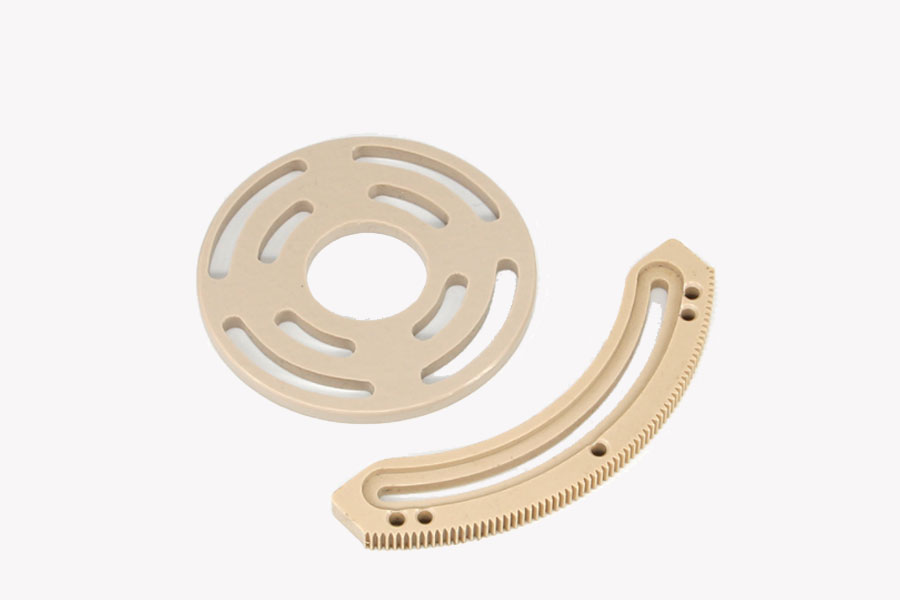
This especially true of the grades reinforced with glass and/or carbon. Sometimes, it's from our team here at Next Generation Tooling & at other times it's by one of the innovative manufacturer's we represent in California and Nevada. All PEEK grades are more abrasive on tooling than softer plastics like nylon and acetal. Our technical section is written by several different people. Proper tooling and support remains important and particular attention should be given to adequately supporting the work. The entire stock can deflect under the pressure of cutting.

In PEEK plastic machining, high tool infeeds and high feed. Controlling Deflection – Plastics inherently vary in their stiffness (modulus) and are more elastic at higher temperatures. This combination of properties is responsible for the very good machinability of PEEK material. This can frequently be managed by using lubricants and changing tooling or speed.Ĥ. When the pressure is removed, the stock will recover and fall out of tolerance. Softening of the stock can allow it to deflect at the surface under the pressure of the cutting tool. PEEK plastics are excellent for applications that require strength and stability under consistent high temperatures (500☏/260☌). Loss of Tolerance – If the overall temperature of the stock changes during or after machining, expansion or contraction can cause the part to fall out of tolerance. In its solid state PEEK is readily machinable, for example, by CNC milling machines and is commonly used to produce high-quality plastic parts that are.

Temperatures at the surface can rinse unexpectedly high.ģ. Most of the heat generated by machining will stay at the surface. Melting or Scorching– The thermal conductivity of plastics is low relative to metals. Limiting Heat Build-up – The softening or melting temperatures of engineering plastics are roughly 1/10th those of metals.Ģ. PEEK (polyetheretherketone) is a high-performance engineering plastic with outstanding resistance to harsh chemicals, and excellent mechanical strength and dimensional stability.


 0 kommentar(er)
0 kommentar(er)
